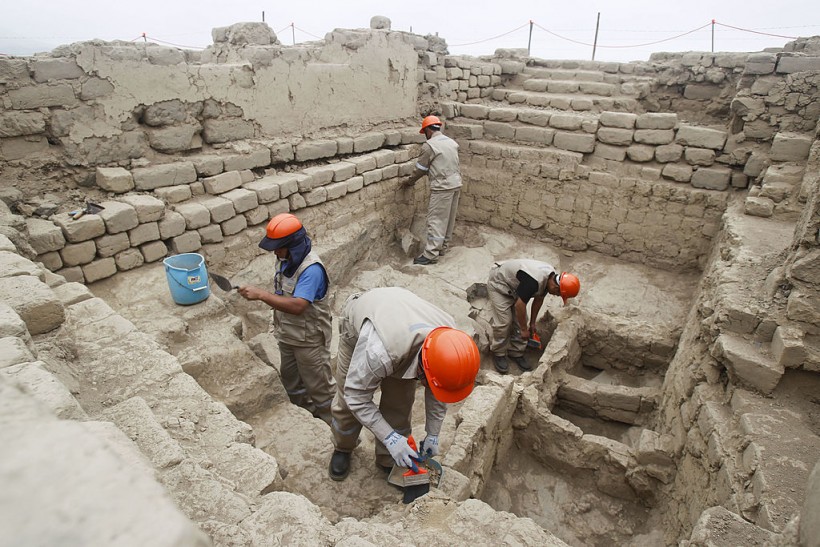An ancient royal tomb, unlooted and untouched, was discovered at the historical site of El Castillo de Huarmey in Peru. The discovery highlights socio-economic and political progress achieved by the Wari Empire in South America-before it was discovered by Europeans.
Prior to the rose of the Inca Empire in the 15th century, the Wari Empire achieved marvelous feats since its rise to power in the 7th century and fall in the 12th century. The El Castillo de Huarmey is both one of the greatest historical infrastructure and symbolic achievements of the Wari Empire.
El Castillo de Huarmey

On Friday, Feb. 25, National Geographic explored the discovery of an ancient royal tomb at the famous El Castillo de Huarmey historical site in Peru back in 2012. Although ancient artifacts at the El Castillo de Huarmey have been looted for more than a thousand years, the tomb remained previously unexplored.
Milosz Giersz, an archaeologist from the University of Warsaw in Poland, and his team have reportedly discovered that grave robbers have missed. The team, along with Peruvian archaeologist Roberto Pimentel Nita, found the passage to the tomb through buried walls along a large rock.
The archaeologists then discovered the tomb which has been unlooted for centuries. The excavation of the tomb in 2013 showed the remains of four women, including a queen or princesses, from the Wari empire. Furthermore, 54 other high-born members were unearthed.
The El Castillo de Huarmey is a pyramid-shaped structure located in the Ancash region of Peru. The site is situated in a coastal area, located approximately 300 kilometers north of the capital city of Lima. For centuries, grave robbers have looted the site with the ancient tomb remaining untouched.
Also read: New Clues Discovered in Deciphering Inca's Mysterious Ancient String Code
Wari Empire
The Wari Empire, also called Huari Empire, was one of the ancient civilizations in the Americas between the years 600 and 1,100 AD-long before Christopher Columbus discovered the continent.
The Wari Empire existed also prior to the rise of the ancient Inca Empire, as per a study published in the Journal of Anthropological Archaeology.
Based on the study, the rise of the Wari Empire was a result of a series of colonization. The empire established its own social and political power in the Cusco region of what is now Peru. Known for their craft in art and textile-making, the empire was theorized to have ended due to a severe drought.
According to the Peruvian Times, the Wari Empire, along with other newly established regimes, was unable to adapt to several centuries of severe drought caused by global warming. As a result, the Inca people moved in until they established a new empire in ancient Peru.
Potential Archaeological Excavations
The discovered ancient royal tomb at the El Castillo de Huarmey in Peru indicates that some archaeological sites will be followed by further excavations. The Society for American Archaeology supports this idea by stating that archaeologists may plan further excavations a significant site is found.
Related article: Mayan Civilization Crumbled, Was Water the Cause?
© 2024 NatureWorldNews.com All rights reserved. Do not reproduce without permission.

![Tsunami Hazard Zones: New US Map Shows Places at Risk of Flooding and Tsunamis Amid Rising Sea Levels [NOAA]](https://1471793142.rsc.cdn77.org/data/thumbs/full/70325/280/157/50/40/tsunami-hazard-zones-new-us-map-shows-places-at-risk-of-flooding-and-tsunamis-amid-rising-sea-levels-noaa.jpg)



